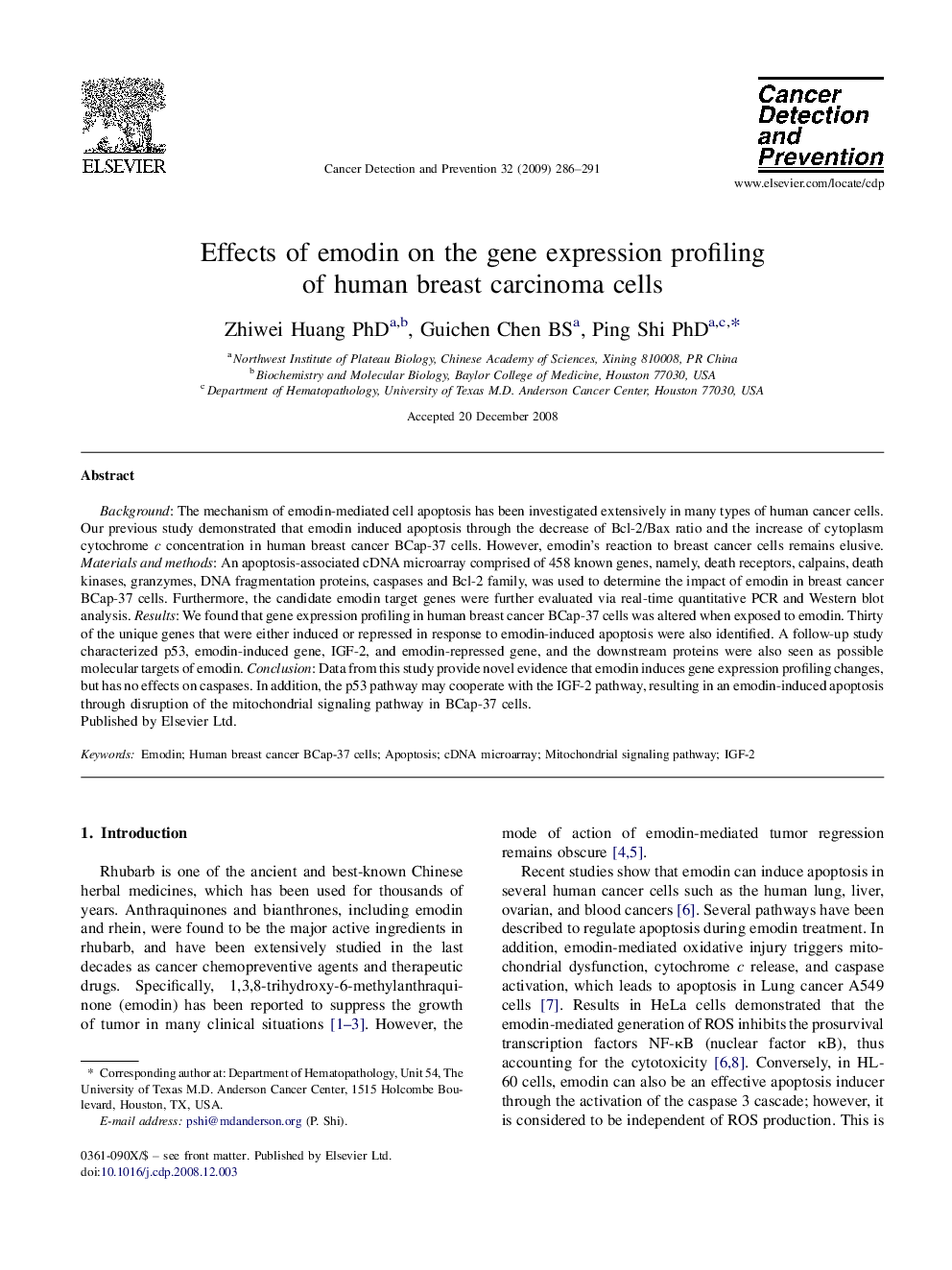| کد مقاله | کد نشریه | سال انتشار | مقاله انگلیسی | نسخه تمام متن |
|---|---|---|---|---|
| 2108564 | 1083799 | 2009 | 6 صفحه PDF | دانلود رایگان |

Background: The mechanism of emodin-mediated cell apoptosis has been investigated extensively in many types of human cancer cells. Our previous study demonstrated that emodin induced apoptosis through the decrease of Bcl-2/Bax ratio and the increase of cytoplasm cytochrome c concentration in human breast cancer BCap-37 cells. However, emodin's reaction to breast cancer cells remains elusive. Materials and methods: An apoptosis-associated cDNA microarray comprised of 458 known genes, namely, death receptors, calpains, death kinases, granzymes, DNA fragmentation proteins, caspases and Bcl-2 family, was used to determine the impact of emodin in breast cancer BCap-37 cells. Furthermore, the candidate emodin target genes were further evaluated via real-time quantitative PCR and Western blot analysis. Results: We found that gene expression profiling in human breast cancer BCap-37 cells was altered when exposed to emodin. Thirty of the unique genes that were either induced or repressed in response to emodin-induced apoptosis were also identified. A follow-up study characterized p53, emodin-induced gene, IGF-2, and emodin-repressed gene, and the downstream proteins were also seen as possible molecular targets of emodin. Conclusion: Data from this study provide novel evidence that emodin induces gene expression profiling changes, but has no effects on caspases. In addition, the p53 pathway may cooperate with the IGF-2 pathway, resulting in an emodin-induced apoptosis through disruption of the mitochondrial signaling pathway in BCap-37 cells.
Journal: Cancer Detection and Prevention - Volume 32, Issue 4, 2009, Pages 286–291